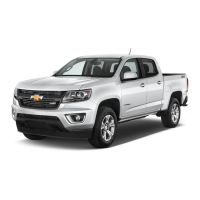Do you have a question about the Chevrolet 2015 City Express and is the answer not in the manual?
Guide to quickly locate information using the manual's index and page numbers.
Explains hazard symbols and their meanings for safety.
Details components and labels using symbols instead of text for operation information.
Lists additional symbols found on the vehicle and their meanings.
Overview of the vehicle's instrument panel and its components.
Brief overview of important vehicle features for initial driving.
Information on vehicle performance, maintenance schedules, and economy tips.
Information on keys, remote keyless entry, and door lock mechanisms.
Information on the vehicle's theft-deterrent features and alarm system.
Guidance on proper safety belt usage and its importance.
Information on the vehicle's airbag system, types, and operation.
Guidelines for properly securing infants and children using restraints.
Details on available storage compartments like the glove box and underseat storage.
Explanation of various warning lights, gauges, and indicators on the instrument cluster.
Information on system messages displayed for fuel and tire status.
Controls for exterior lamps, including headlamps and turn signals.
Operation of interior lighting such as instrument panel and dome lamps.
Details on AM-FM radio operation, finding stations, and storing favorites.
Using Bluetooth for hands-free phone calls and managing contacts.
How to control the vehicle's heating, cooling, and ventilation.
Guidance on safe driving practices like avoiding distraction and drunk driving.
Procedures for new vehicle break-in and starting the engine.
Information on the ABS system, brake pedal, and system parts.
How to use and set the cruise control system.
Guide to performing basic vehicle checks and own service work.
Important steps for ensuring proper engine oil level and maintenance.
Guidelines on tire maintenance, types, pressure, and safety.
Importance of correct tire pressure and how to check it.
Safe procedures for jump starting a vehicle with a dead battery.
Schedule of owner checks and required services at different intervals.
List of recommended fluids and lubricants with part numbers and specifications.
Information on Vehicle Identification Number (VIN) and its location.
Capacities and specifications for the vehicle, including fluids and torque.
Steps to follow if concerns are not resolved by the dealership.
How to report safety defects to the US and Canadian governments and GM.
Information on vehicle data recording, privacy, and event data recorders.
| Brand | Chevrolet |
|---|---|
| Model | 2015 City Express |
| Category | Automobile |
| Language | English |











